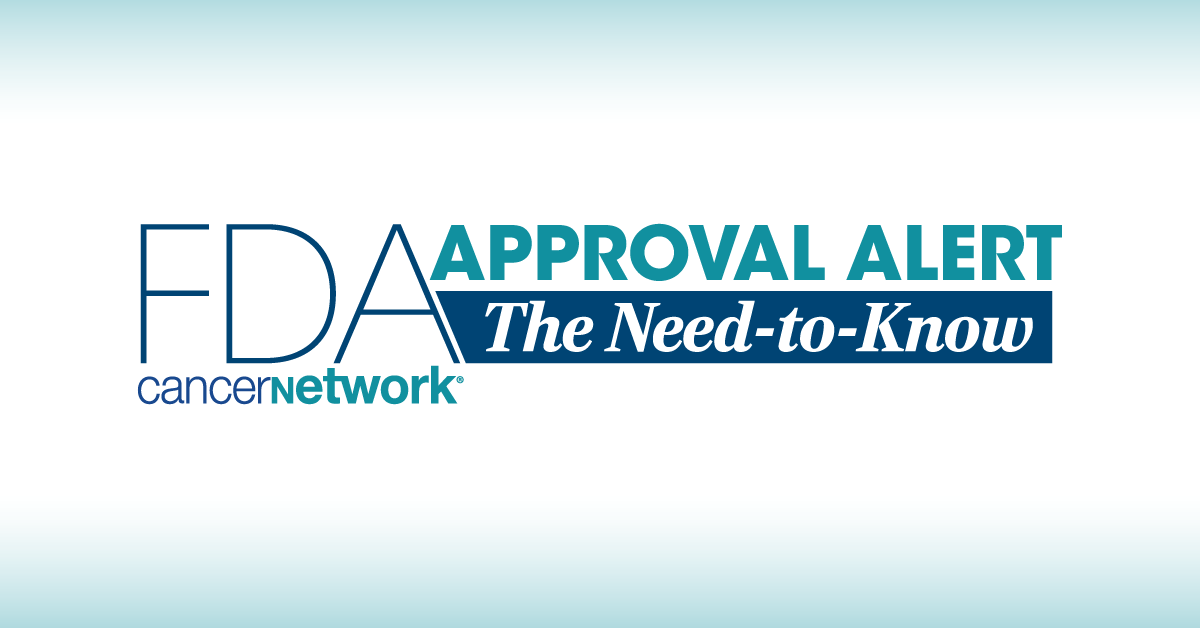FDA Approves Adjuvant Durvalumab/Chemo in Muscle-Invasive Bladder Cancer
Results from the phase 3 NIAGARA trial led to the approval of adjuvant durvalumab/chemotherapy for patients with muscle-invasive bladder cancer after radical cystectomy.
Results from the phase 3 NIAGARA trial led to the approval of durvalumab plus chemotherapy for patients with muscle-invasive bladder cancer.

Durvalumab (Imfinizi) plus chemotherapy followed by single-agent durvalumab has been approved by the FDA for patients with muscle-invasive bladder cancer after radical cystectomy, according to a press release from the agency.1
The approval was based on results from the phase 3 NIAGARA trial (NCT03732677), in which updated results were recently presented at the 2025 ASCO Genitourinary Cancer Symposium.2 Results presented here were focused on efficacy and safety, as well as the impact of pathological complete response (pCR) for patients in the aforementioned population.
Results presented at the 2024 European Society of Medical Oncology Congress and subsequently published in the New England Journal of Medicine highlighted that the event-free survival (EFS) was not reached (NR; 95% CI, NR-NR) in the durvalumab arm and 46.1 months (95% CI, 32.23-NR) in the comparator arm (HR, 0.68; 95% CI, 0.56-0.82; P <.0001).3,4 The 12-month EFS rates in either arm included 76.0% vs 69.9%, and the 24-month rates were 67.8% vs 59.8%.
QUOTE
In the NIAGARA trial, patients were randomly assigned 1:1 to either the durvalumab arm (n = 533) or the comparator arm (n = 530). In the durvalumab arm, patients were given durvalumab at 1500 mg intravenously plus gemcitabine and cisplatin every 3 weeks for 4 cycles as neoadjuvant treatment; patients then proceeded to a radical cystectomy and were given 1500 mg of IV durvalumab every 4 weeks for 84 cycles. In the comparator arm, patients were given gemcitabine plus cisplatin and moved to radical cystectomy but did not receive adjuvant treatment.
This updated analysis focused on results from the secondary end points, including metastasis-free survival (MFS), disease-specific survival, and safety.
The median MFS was NR in either arm (HR, 0.67; 95% CI, 0.54-0.83; P <.001). At 24 months, the MFS rates were 75.1% in the durvalumab arm and 65.1% in the comparator arm. Disease-specific survival was NR in either arm (HR, 0.69; 95% CI, 0.52-0.91; P = .008). The 24-month rates were 89.2% vs 82.2%.
The pCR in the durvalumab arm was 37.3% (95% CI, 33.2%-41.6%) vs 27.5% (95% CI, 23.8%-31.6%) in the comparator arm (odds ratio [OR], 1.60; 95% CI, 1.23-2.08; P = .0005).
In patients with a pCR, the median age in the durvalumab arm (n = 199) was 64.0 years vs 65.5 years in the comparator arm (n = 146), with 87% vs 79% were male, 69% vs 65% were White, 56% vs 54% had a tumor stage less than T2N0, and 84% vs 80% had urothelial carcinoma. In patients without a pCR, the median age in the durvalumab arm (n = 334) was 65.0 years vs 66.0 years in the comparator arm (n = 384), 79% vs 83% were male, 65% vs 69% were White, 62% vs 62% had a tumor stage less than T2N0, and 87% vs 84% had urothelial carcinoma.
For those with a pCR, the median EFS was NR in both arms (HR, 0.58; 95% CI, 0.332-0.999), and the 24-month EFS rates were 92.1% in the durvalumab arm vs 85.8% in the comparator arm. For those without a pCR, the median EFS in the durvalumab arm was 34.7 months (95% CI, 20.5-NR) vs 22.8 months (95% CI, 15.5-30.6) in the comparator arm (HR, 0.77; 95% CI, 0.631-0.948), and the 24-month rates were 53.3% vs 49.5%.
Overall survival (OS) was NR in those with pCR in both arms (HR, 0.72; 95% CI, 0.367-1.426), and the 24-month OS rates were 95.5% in the durvalumab arm and 91.1% in the comparator arm. For those who did not have a pCR, the median OS was NR in both arms (HR, 0.84; 95% CI, 0.660-1.068), and the 24-month rates were 74.1% vs 68.9%.
In the overall population, 99% of patients in the durvalumab arm experienced an adverse effect (AE) vs 100% in the comparator arm, with 69% vs 68% having a grade 3/4 AE. Serious AEs occurred in 62% vs 55%, and 5% vs 6% of patients died.
Discontinuation of neoadjuvant durvalumab occurred in 9% of patients, and 14% in the durvalumab arm and 15% in the chemotherapy arm had discontinuation of neoadjuvant chemotherapy. Delays in surgery occurred in 2% vs 1% of patients.
References
- FDA approves durvalumab for muscle invasive bladder cancer. News release. FDA. March 28, 2025. Accessed March 28, 2025. https://tinyurl.com/yc57uhb3
- Galsky M, Van Der Heijden M, Catto J, et al. Additional efficacy and safety outcomes and an exploratory analysis of the impact of pathological complete response (pCR) on long-term outcomes from NIAGARA. J Clin Oncol. 2025;43(5):659. doi:10.1200/JCO.2025.43.5_suppl.659
- Powles T, Van der Heijden MS, Galsky M, et al. A randomized phase III trial of neoadjuvant durvalumab plus chemotherapy followed by radical cystectomy and adjuvant durvalumab in muscle-invasive bladder cancer (NIAGARA). Presented at: 2024 ESMO Congress; September 13-17, 2024; Barcelona, Spain. Abstract LBA5.
- Powles T, Catto JWF, Galsky MD, et al. Perioperative durvalumab with neoadjuvant chemotherapy in operable bladder cancer. N Engl J Med. 2024;391(19):1773-1786. doi:10.1056/NEJMoa2408154
Newsletter
Stay up to date on recent advances in the multidisciplinary approach to cancer.